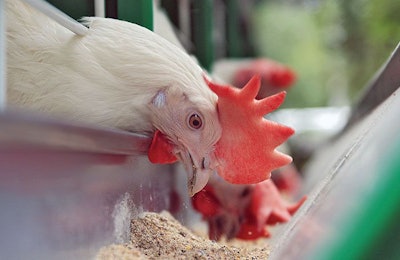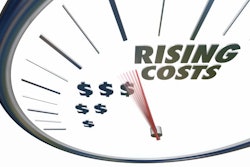
Rabobank: US hog market expected to stay firm, chicken prices rebound, feed grain prices continue rally
North American poultry and pork producers are seeing higher prices, as corn, soybeans and wheat prices continue their rally, according to Rabobank’s North American Agribusiness Review for February 2021.
Lower weekly chick placements indicate integrators are limiting production growth. Broiler slaughter is down 3.1% from the previous year, averaging 167 million head per week.
“We expect weights to fall slightly as integrators shift to smaller bird sizes and as higher feed costs begin to work against the larger sizes,” the report said.
Chicken prices have rebounded sharply: wings are at historic highs, up 48% from a year ago; boneless breast meat is up 41% year over year; however, leg quarter values are down 21% year over year.
Avian influenza outbreaks in several markets are expected to limit exports from other nations, which should benefit the U.S.
Hog markets to stay firm
Hog prices have increased recently, anticipating tighter supplies in the near term. Rabobank said it expects hog markets to remain firm through the first quarter of 2021.
“Higher-cost feed has pushed raising costs above US$70 per hundredweight for most producers and may also be playing a role in the price strength as producers are likely to curb expansion plans and limit weight gain,” the report said.
Pork is seeing stronger domestic and export demand. U.S. pork exports were up 15% in 2020, while Mexico’s shipments in 2020 were up 53% year over year.
Corn will compete for acreage
The U.S. is expected to see record corn and soybean acres for the 2021-22 growing season. The big change in the corn outlook, Rabobank said, “has been the downward revision of 2020 production, the impact on the balance sheet and the resulting upward price pressure on futures,” which have been boosted by the soybean market rally.
“Corn has to keep up or lose acres to soybeans,” the report said, adding that corn is also competing with other crops for acreage.
China has a corn deficit that is expected to continue to grow, and its imports of U.S. corn are at a record high. Several factors are contributing to China’s strong corn demand:
- The move toward modern hog production requires feed rations that contain corn and soybean meal
- Swill feeding to hogs is now banned
- China is looking to rebuild inventories
- There is a lack of quality domestic corn substitutes
- There is not enough domestic production to meet demand
Soybeans: Higher prices, good margins
“Like corn, soybean prices have been supported from a smaller 2020 crop than expected, an enormous rebound in Chinese imports and a tight stocks situation that may very well get tighter,” Rabobank said.
The amount of planted soybean acres in the U.S. is expected to see a big increase in 2021.
“According to our 10-year baseline model, higher soybean prices and good margins for 2021 are going to push U.S. planted soybean acres to increase 90 million acres in 2021 vs. 83.1 million last year,” the report said.
Chinese demand for U.S. soybeans is expected to remain high as the country rebuilds its hog herd, but competition from Brazil on the export market is expected to rise this year as the country could see record production.
Wheat supported by corn, soybean prices
Wheat has been supported by strong corn and soybean prices. However, the bitter cold winter conditions are raising uncertainty about the quality of the winter wheat crop.
“The probabilities are not in favor of a great winter wheat crop this year – another factor supporting wheat prices this year,” Rabobank said.
The global wheat outlook for 2020-21 is for greater supply, increased consumption, higher exports and reduced stocks from the previous forecast.
“Increased global consumption and exports are being driven by China, as domestic corn prices make it cheaper to feed wheat,” the report said.
Alfalfa hay a good alternative for cattle
Alfalfa hay prices are down 4.8% from May to December 2020 compared with the previous year.
“Prices for both energy and protein for animal feed are getting more expensive, making hay a good alternative for keeping feed cattle costs lower than using more of the traditional feed grains,” Rabobank said.
A combination of high corn prices and low ethanol margins are keeping DDGS prices high.
Soybean meal continues to see high prices, but “if prices continue their upward trend as reported by the latest WASDE, demand for other meal will increase as prices begin rationing demand,” the report said.











